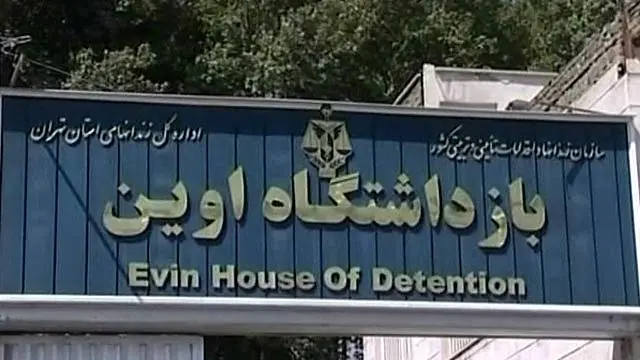
|
Getting your Trinity Audio player ready...
|
[Want even more content from FPM? Sign up for FPM+ to unlock exclusive series, virtual town-halls with our authors, and more—now for just $3.99/month. Click here to sign up.]
Iran has always stood apart from the rest of the Muslim world. Far more than the Arab countries that stretch from Marrakech to Muscat, Iran has proudly, even fiercely, protected its pre-Islamic cultural heritage. If other people from Muslim lands have relocated to the West in search of money – often in the form of generous government handouts – Iranians fled the Islamic Revolution in search of freedom. While other Muslims in the West tend to have come from remote villages and to have brought with them some of the most primitive of Islamic social practices, Iranians in the West tend to be urban, freedom-loving, and well-educated (no ethnic group in the U.S. holds more master’s or doctoral degrees per capita), with high levels of integration and intermarriage. If Dearborn has America’s largest Arab population, Minneapolis its greatest concentration of Somalis, and Hamtramck the first Muslim-majority city in the U.S. (with particularly large numbers of Yemenis and Bangladeshis), Iranians tend to be concentrated in posh places like Beverly Hills, which has the highest proportion of Iranians – 20.8% – of any municipality in California.
And while other immigrants from the Muslim world bring with them mosques and madrassas by the score, many Iranian-Americans are not believing Muslims, having been raised as Christians, Jews, Baha’is, or Zoroastrians, or having quit Islam at the same time that they quit the ayatollah’s Iran. In the aftermath of the spectacular Israeli and U.S. assaults on Iranian nuclear targets, it has been remarkable to observe groups of white young Americans waving Iranian flags at protest rallies – shouting fatuous slogans about a religion, a culture, and a part of the world they know virtually nothing about – even as Iranian-Americans cheer the U.S. and Israeli strikes and call for the fall of the odious Tehran regime that transformed a once extremely Westernized country into an Islamic autocracy.
Prior to the U.S. strikes on Iran, as well as in their immediate aftermath, politicians, diplomats, and commentators all over the Western world predicted that this would prove to be just the first volley of World War III – that Iran would be quick to retaliate, perhaps with the help of Russia or China. Instead, the sheer level of devastation, and the assurance by Trump that there was a lot more where that came from, caused the mullahs to react wisely – to do, that is, virtually nothing, and retreat, out of sheer self-protectiveness, from their long position of aggressiveness on the world stage.
Then again, it’s not quite correct to say that the mullahs did virtually nothing. According to various reports, each more alarming than the next, Iran’s leaders have turned inward, doubling down – or more – on their repression in an obvious effort to prevent the popular uprising that many outside observers have predicted and prayed for. What does it mean to intensify repression in an already repressive country? How to describe such an occurrence? In an interview with Fox News Digital (FND), Kasra Aaraby of United against Nuclear Iran said that Iran’s regime “has always been totalitarian, but the level of suppression now is unprecedented,” with authorities introducing a “North Korea-style model of isolation and control.” It’s now common, Aaraby said, for people to “vanish without explanation.” An article put out by the Oslo-based association Iran Human Rights agreed, speaking of prisoners being “transferred to unknown locations,” of suspected spies “at risk of torture or execution,” of a new law that greatly expands the list of offenses subject to the death penalty, and of mass actions against Iranian Jews and Baha’i. Le Monde reported on “the establishment of special courts around the country to try ‘traitors and mercenaries.’”
Underlying this new policy is a deep new sense of insecurity. Ruya Boroumand, executive director of Abdorrahman Boroumand Center, a U.S.-based NGO, told AFP that the mullahs’ recognition of their inability “to control [their] airspace and protect civilians” had raised their awareness of the need to use “fear” to “maintain control” over the populace and keep internal opponents “from organising and mobilising forces.” Boroumand added: “And they may only just be getting started,” noting that the ceasefire after the 1980s Iran-Iraq War “was followed by a wave of repression that included the execution of thousands of dissidents.” As the New York-based Center for Human Rights in Iran (CHRI) told Le Monde, the goal is “to stamp out any trade of dissent.”
Now as then, Iran’s mullahs know there are multitudinous enemies within, including, most menacingly, people “at the highest level” of the Islamic Revolutionary Guard Corps (IRGC) without whose clandestine transfer of key information to the U.S. and Israel the missions could not have been carried out successfully. At the same time, curiously, there are younger IRGC officers who, as FND reported, are even “more radical and deeply indoctrinated” than their elders. “Over half of their training,” wrote FND, “is now ideological,” the result being that some of them “have begun turning on senior commanders, accusing them of being soft on Israel or even collaborating with Mossad.” Aarabi pointed out the irony: “Khamenei created these extreme ideological ranks to consolidate power — and now they’re more radical than he is….He’s struggling to control them.”
One is reminded, of course, of the Reign of Terror in France, in which waves of ever more fanatical revolutionaries guillotined their insufficiently radical predecessors – an insane process that didn’t end until Robespierre himself was put to the blade, along with a few dozen of his closest collaborators. Is Iran in for a similar bloodbath? Then again, there’s the example of the events that took place in Tiananmen Square in the spring of 1989. I’m old enough to remember those weeks of protest, covered breathlessly and on-the-spot by reporters and cameramen from U.S. TV networks and other Western media. Some of us, at that historic moment when Communism in Europe was on the verge of peacefully and miraculously unraveling, imagined that the leaders in Beijing might allow a similar revolution to take place in their own capital (as well as in hundreds of other cities around the country), and allow Red China to become the world’s largest democracy. Instead a brutal massacre ensued.
Where will the current developments in Iran lead? Will the people bring down the regime? Or will the regime impose on them an even more tyrannical order modeled on the North Korean system? Can it be that while many Muslim governments are loosening the reins on their subjects, the year 2025 will introduce into the international community a brand-new North Korea, this one nearly four times the population of the original? Is it possible, for any length of time, to force the Iranian people, well-educated and worldly as they are, to live in a hermit kingdom?


Time for sanctions on Iran and their Mullahs getting Hanged covered in Pig Blood
“”Meet the new boss, same as the old boss.” – The Who
Essentially the Iranian’s traded the brutality, torture and murder of the Shah’s SAVAK for the brutality brutality, torture and murder of the Mullahs MOIS. Does this culture have any hope ?